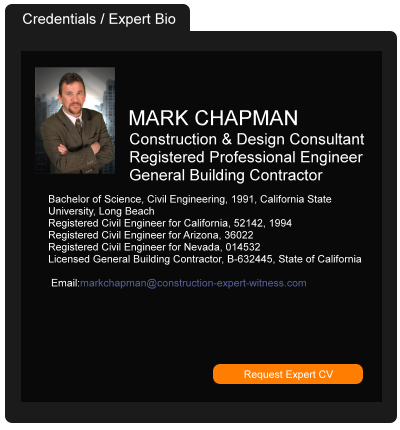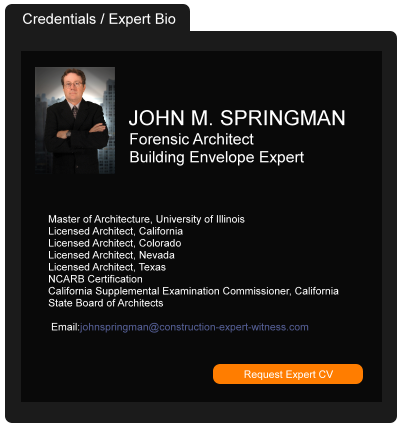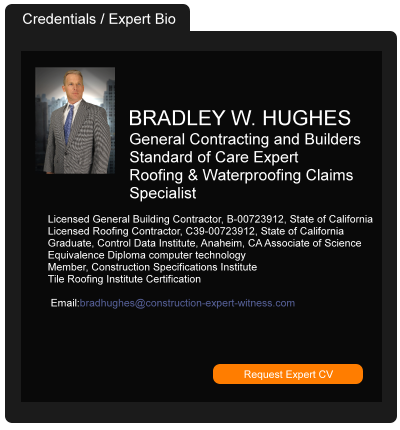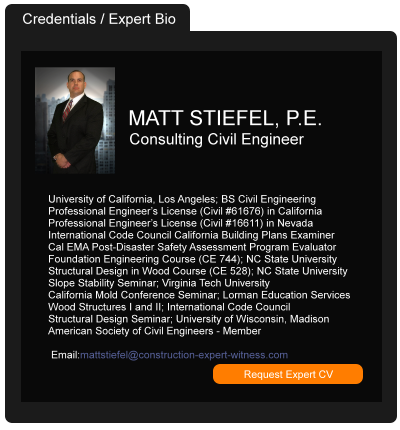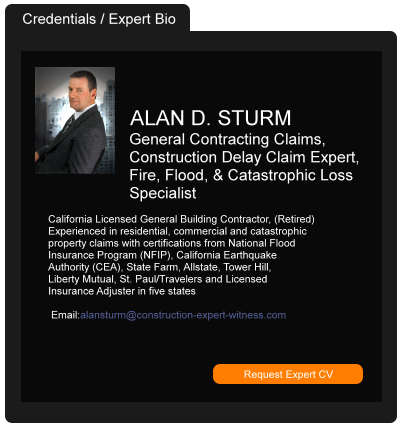Mechanics Lien Release Bond – What Happens Now? What exactly is a Mechanics Lien and Why Might it Need to be Released?
January 04, 2021 —
William L. Porter - Porter Law GroupMechanics Lien Release Bond – What Happens Now? What exactly is a Mechanics Lien and Why Might it Need to be Released?
California law entitles unpaid contractors, subcontractors, and material suppliers to record a mechanics lien on property where they performed work or supplied materials. The mechanics lien attaches to the real property as a legal interest and secures the right to payment for the work performed and materials supplied. If payment is not forthcoming the mechanics lien allows the property where the work was performed and materials supplied to be sold under court order to satisfy the debt. It is a powerful remedy against owners and their agents who do not pay for work performed and materials supplied to improve the owner’s property.
A Mechanics Lien Release Bond Frees Property from a Mechanics Lien
Owners typically do not wish to have their property sold out from under them. Fortunately for owners, there is a method by which a mechanics lien can be substituted for another interest and sale of the property thereby avoided. This method is through the use of a mechanics lien release bond. California Civil Code §8424 allows a property owner or contractor effected by a mechanics lien to record a mechanics lien release bond equal to 125 percent of the lien amount with the County Recorder where the mechanics lien has been recorded. The effect of this is to substitute the mechanics lien release bond for the mechanics lien itself, thereby relieving the property from the possibility of that property being sold to satisfy the debt. Instead, any payment made will come from the release bond.
Read the court decisionRead the full story...Reprinted courtesy of
William L. Porter, Porter Law GroupMr. Porter may be contacted at
bporter@porterlaw.com
The Anatomy of a Construction Dispute- The Claim
December 02, 2015 —
Christopher G. Hill – Construction Law MusingsA new year brings with it promise and challenges. The promise is a relatively clean slate and the thought that 2015 will be a great year for construction professionals and those that assist them. The challenges come from the almost inevitable issues that can arise on a construction site with its many moving parts and enough potential pitfalls to make even the most optimistic construction attorney, contractor, subcontractor or supplier think that Murphy was an optimist.
In order to assist with the potential challenges, this post will be the first in a series of “musings” on the best way to handle a payment dispute arising from a construction contract. This week’s post will discuss what the first steps should be once a payment dispute or claim arises. We’ll assume that you, as a construction contractor, have taken early advantage of the services of a construction lawyer and have carefully reviewed your contract for issues before signing that contract.
Read the court decisionRead the full story...Reprinted courtesy of
Christopher G. Hill, Law Office of Christopher G. Hill, PCMr. Hill may be contacted at
chrisghill@constructionlawva.com
Haight’s Stevie Baris Selected for Super Lawyers’ 2021 Northern California Rising Stars
July 19, 2021 —
Stevie B. Baris - Haight Brown & Bonesteel LLPCongratulations to Stevie Baris who was selected to the Super Lawyers 2021 Northern California Rising Stars list. Each year, no more than 2.5% of the lawyers in the state are selected by the research team at Super Lawyers to receive this honor.
Super Lawyers, a Thomson Reuters business, is a rating service of outstanding lawyers from more than 70 practice areas who have attained a high degree of peer recognition and professional achievement. The annual selections are made using a patented multiphase process that includes a statewide survey of lawyers, an independent research evaluation of candidates and peer reviews by practice area. The result is a credible, comprehensive and diverse listing of exceptional attorneys.
Read the court decisionRead the full story...Reprinted courtesy of
Stevie B. Baris, Haight Brown & Bonesteel LLPMr. Baris may be contacted at
sbaris@hbblaw.com
Modern Tools Are Key to Future-Proofing the Construction Industry
September 19, 2022 —
Guillaume Le Gouic - Construction ExecutiveThe U.S. construction industry is facing a tech revolution that’s upending the roles of skilled workers. Many traditional contractors are struggling to embrace the new technologies customers increasingly demand, while the industry struggles to attract young professionals. According to the latest
American Community Survey data, the median age of a construction worker is 41.
This is particularly concerning given the confluence of two trends: the construction industry is facing a critical workforce shortage that’s only
expected to intensify, and the workforce is aging—
NCCER is predicting around 40% are expected to retire by 2031. Industry leaders must prioritize using the latest industry solutions and innovations to modernize construction work, transform the construction industry and appeal to the next generation of contractors.
Throughout COVID-19, the construction sector experienced a higher number of workers quitting jobs as opposed to being laid off, indicating the older workforce likely took the opportunity to retire early, along
with more than three million other Americans who did the same. Currently, industry leaders are not doing enough to communicate opportunities to help shift the career perception of electrical contractors from simply being “blue collar” and un-exciting. A 2019 National Association of Home Builders (NAHB) found only
3% of people ages 18 to 25 were interested in pursuing a construction career, with most respondents noting the desire for a less physically demanding job.
Reprinted courtesy of
Guillaume Le Gouic, Construction Executive, a publication of Associated Builders and Contractors. All rights reserved.
Read the court decisionRead the full story...Reprinted courtesy of
N.J. Appellate Court Applies Continuous Trigger Theory in Property Damage Case and Determines “Last Pull” for Coverage
November 15, 2017 —
K. Alexandra Byrd – Saxe Doernberger & Vita, P.C.The New Jersey Superior Court, Appellate Division, published an important decision addressing several fundamental issues regarding how a commercial general liability (CGL) policy applies to long-term property damage. The court held that: (1) a continuous trigger theory of coverage may be applied to third-party liability claims involving progressive property damage caused by an insured’s allegedly defective work; (2) the “last pull” (i.e., the cutoff point) of the continuous trigger is when the “essential nature and scope” of the property damage first becomes known or could reasonably be known; and (3) the “last pull” is not when the property damage is “attributed” to the insured’s faulty work.
The underlying action in Air Master & Cooling Inc. v. Selective Ins. Co., et al. 1 concerned property damage arising out of the construction of a seven-story, 101-unit condominium building in Montclair, New Jersey. The project’s construction manager hired Air Master & Cooling, Inc. (Air Master) to perform HVAC work on the project, including installing individual HVAC equipment in each resident’s unit from 2005 to 2008. In early 2008, unit owners began complaining about water infiltration and damage to their windows, ceilings, and other portions of their units. The general contractor and developer began assessing the damage and making repairs. Eventually, in April 2010, an expert consultant performed a moisture survey of the roof and discovered 111 areas that were damaged by water infiltration. The expert report indicated that “it [was] impossible to determine when [the] moisture infiltration occurred.”
Read the court decisionRead the full story...Reprinted courtesy of
K. Alexandra Byrd, Saxe Doernberger & Vita, P.C.Ms. Byrd may be contacted at
kab@sdvlaw.com
Utility Contractor Held Responsible for Damaged Underground Electrical Line
October 11, 2017 —
Brett M. Hill - Ahlers & Cressman, PLLCThe Washington State Court of Appeals recently addressed an excavation contractor’s responsibilities under the Underground Utilities Damage Prevention Act (UUDPA), RCW 19.122. That statute was enacted in 2011 and imposed certain statutory duties on parties involved with projects requiring excavation.
In this case, Titan Earthworks, LLC contracted with the City of Federal Way to perform certain street improvements including installation of a new traffic signal. During the process of excavating for the traffic signal, Titan drilled into an energized underground Puget Sound Energy power line. PSE sought damages from Titan and Titan sued the City of Federal Way.
Read the court decisionRead the full story...Reprinted courtesy of
Brett M. Hill, Ahlers & Cressman, PLLCMr. Hill may be contacted at
bhill@ac-lawyers.com
Construction Contract Clauses That May or May Not Have Your Vote – Part 3
November 23, 2016 —
Garret Murai – California Construction Law BlogScope, time and cost provisions may be the most important clauses in your construction contract but they’re not the only ones which can impact your bottom line. The third in a multi-part series, here are some other important construction contract clauses that may determine whether you come out a winner.
Provision: Supervisory Personnel, Employees, and Authority to Bind Provisions
- Typical Provision: ”At all times during performance of the Work, Subcontractor shall have at the job site a competent supervisor approved by Owner. Subcontractor’s supervisor shall be deemed a representative of Subcontractor and all communications given to Subcontractor’s supervisor shall be as binding as if such communications were given to Subcontractor. Should Contractor object to Subcontractor’s supervisor’s presence at the job site, or the presence at the job site, or the presence at the job site of any other employee or agent of Subcontractor or any employee or agent of Subcontractor of Subcontractor, Subcontractor shall cause such persons to be replaced immediately as directed by Contractor.”
- What it Means: Higher-tiered parties have a legitimate interest in ensuring that only competent individuals are allowed to perform work on a project and in ensuring that there are peaceable relations at a job site. Higher-tiered parties also have an interest in ensuring that directives and agreements made and reached in the field are followed. However, it is unreasonable for higher-tiered party or to require that such personnel be able to bind that lower-tiered party to agreements best decided by others.
- What You Can Do: Lower-tiered parties should seek to include language which provides that only “reasonable” changes to personnel are allowed and, as necessary, limit by category or issue the types of items on-site personnel can bind the lower-tiered party to.
Read the court decisionRead the full story...Reprinted courtesy of
Garret Murai, Wendel Rosen Black & Dean LLPMr. Murai may be contacted at
gmurai@wendel.com
ASCE Statement on National Dam Safety Awareness Day - May 31
June 06, 2022 —
Dennis D. Truax, President, American Society of Civil Engineers (ASCE)Washington, DC. – Nationwide, more than 92,000 dams protect communities across the country, providing numerous services including irrigation, water conservation, and flood protection. Advocating for the safety, robustness, and sustainability of our nation's dams is a top priority for ASCE as we recognize May 31 as National Dam Safety Awareness Day.
National Dam Safety Awareness Day is observed in remembrance of the "Johnstown Flood" on May 31, 1889. Failures of the South Fork Dam near Johnstown, PA, resulted in the death of more than 2,200 people. This tragedy serves as an illustration of the critical importance of effectively maintaining and managing our nation's dams and ensuring that adequate dam safety measures remain in place to avoid these preventable tragedies.
ASCE's
2021 Report Card for America's Infrastructure gave the nation's dams a "D" grade. Of the nation's 92,000 dams, more than 15,000 are classified as having "high hazard potential", meaning that dam failure would result in the loss of life. While increased state investment in dam safety programs has allowed for better assessment of dams and the ability to identify rehabilitation needs as well as potential hazards, increased federal investment is still needed to ensure the safety of dams nationwide.
ABOUT THE AMERICAN SOCIETY OF CIVIL ENGINEERS
Founded in 1852, the American Society of Civil Engineers represents more than 150,000 civil engineers worldwide and is America's oldest national engineering society. ASCE works to raise awareness of the need to maintain and modernize the nation's infrastructure using sustainable and resilient practices, advocates for increasing and optimizing investment in infrastructure, and improve engineering knowledge and competency. For more information, visit www.asce.org or www.infrastructurereportcard.org and follow us on Twitter, @ASCETweets and @ASCEGovRel.
Read the court decisionRead the full story...Reprinted courtesy of























































